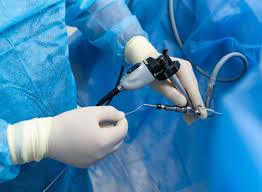Healing Faster: The Impact of Technology on Postoperative Recovery

Strong 8k brings an ultra-HD IPTV experience to your living room and your pocket.
Introduction:
The field of surgery has experienced a seismic shift over the past decade, driven by advancements in technology, innovative techniques, and a commitment to improving patient outcomes. Among these advancements, smart surgical instruments are emerging as a game-changer, enhancing surgeon capabilities and transforming surgical procedures. This article explores the top five advancements in surgical procedures, with a focus on the role of smart surgical instruments in revolutionizing the operating room.
1. Smart Surgical Instruments: Enhancing Surgeon Capabilities
Overview
Smart surgical instruments are equipped with built-in sensors and advanced technologies that provide real-time data and feedback during surgical procedures. These instruments are designed to enhance precision, improve decision-making, and reduce the risk of complications. The integration of smart technology into surgical tools has the potential to significantly elevate the quality of care that surgeons can deliver.
Features of Smart Surgical Instruments
• Real-time Monitoring: Many smart instruments come equipped with sensors that monitor vital signs and tissue conditions in real time. This allows surgeons to make informed decisions based on immediate feedback, enhancing the safety and effectiveness of procedures.
• Data Analytics: Smart instruments can collect and analyze data during surgery, providing insights into the procedure's progress. This data can be used for continuous improvement and training, ensuring that surgical techniques evolve with each operation.
• Enhanced Precision: With features such as haptic feedback and advanced imaging, smart instruments enable surgeons to perform complex tasks with greater accuracy. This is particularly beneficial in delicate procedures where precision is critical.
Impact on Surgical Procedures
Smart surgical instruments are transforming various surgical specialties, including orthopedics, cardiology, and neurosurgery. By enabling more accurate cuts, improved suturing techniques, and better navigation through complex anatomy, these instruments contribute to shorter recovery times and better patient outcomes.
2. Robotic-Assisted Surgery
Overview
Robotic-assisted surgery has revolutionized the surgical landscape by allowing for minimally invasive procedures with enhanced precision. Surgeons operate through small incisions using robotic arms that translate their movements into precise actions.
Benefits of Robotic Surgery
• Minimally Invasive: Robotic systems allow for smaller incisions, resulting in reduced postoperative pain, shorter hospital stays, and quicker recoveries.
• Greater Precision: The enhanced dexterity of robotic arms enables surgeons to perform intricate procedures with unparalleled accuracy, reducing the risk of complications.
• Improved Visualization: Robotic systems often include high-definition, 3D visualization, providing surgeons with a clearer view of the surgical field.
Real-World Applications
Robotic-assisted surgery is widely used in urology, gynecology, and general surgery. Facilities equipped with robotic systems report higher rates of patient satisfaction and improved surgical outcomes, reinforcing the value of this technology.
3. Minimally Invasive Techniques
Overview
Minimally invasive surgery (MIS) involves techniques that limit the size of incisions, resulting in less trauma to the body. This approach includes laparoscopic and endoscopic surgeries that have become staples in modern surgical practice.
Advantages of Minimally Invasive Surgery
• Reduced Pain and Scarring: Smaller incisions lead to less postoperative pain and minimal scarring, significantly improving patient satisfaction.
• Faster Recovery Times: Patients undergoing MIS typically experience quicker recoveries and shorter hospital stays, allowing for a faster return to daily activities.
• Lower Risk of Complications: The reduced trauma associated with MIS often leads to lower rates of complications, making it a safer option for many patients.
Trends in MIS
The use of advanced imaging technologies in conjunction with minimally invasive techniques has further enhanced surgical precision. Surgeons can now visualize structures in real time, improving their ability to navigate complex anatomical regions.
4. Enhanced Recovery After Surgery (ERAS) Protocols
Overview
Enhanced Recovery After Surgery (ERAS) protocols focus on optimizing the surgical experience through evidence-based practices. These protocols are designed to improve recovery times and overall patient outcomes.
Key Components of ERAS
• Preoperative Education: Educating patients about what to expect before, during, and after surgery helps to reduce anxiety and improve adherence to recovery protocols.
• Optimized Pain Management: Implementing multimodal pain management strategies reduces reliance on opioids and improves overall pain control.
• Early Mobilization: Encouraging patients to move soon after surgery promotes faster recovery and reduces the risk of complications.
Benefits of ERAS
Institutions adopting ERAS protocols report significant reductions in hospital stays, complications, and readmission rates. By focusing on the entire surgical journey, these protocols enhance the overall quality of care.
5. Advanced Imaging Technologies
Overview
Advanced imaging technologies are integral to modern surgical procedures, enabling surgeons to visualize complex anatomy with unprecedented clarity. Techniques such as MRI, CT scans, and 3D imaging are transforming preoperative planning and intraoperative navigation.
Applications of Advanced Imaging
• Preoperative Planning: Detailed imaging allows surgeons to create tailored surgical plans that account for a patient’s unique anatomy, improving the likelihood of successful outcomes.
• Intraoperative Guidance: Real-time imaging during surgery provides surgeons with immediate feedback, allowing for precise navigation and minimizing the risk of damaging surrounding tissues.
• Training and Simulation: Advanced imaging technologies can be used in training simulations, helping new surgeons develop their skills in a controlled environment.
The Future of Imaging in Surgery
As imaging technologies continue to evolve, the integration of augmented reality (AR) and virtual reality (VR) into surgical practice holds great promise. These technologies can provide additional layers of information and visualization, further enhancing surgical precision.
Conclusion
The advancements in surgical procedures over the past decade have significantly transformed the landscape of healthcare. Smart surgical instruments, robotic-assisted surgery, minimally invasive techniques, ERAS protocols, and advanced imaging technologies are at the forefront of this evolution. These innovations not only enhance the capabilities of surgeons but also prioritize patient safety, comfort, and recovery.
As the surgical field continues to embrace technological advancements, the future holds exciting possibilities for even greater improvements in surgical care. Institutions that adopt these innovations will be better equipped to provide high-quality care, ultimately leading to improved patient outcomes and satisfaction. The ongoing commitment to innovation will ensure that the surgical field remains dynamic, effective, and patient-centered for years to come.
Read the complete blog: https://www.nextmsc.com/blogs/surgical-procedures-market-trends
Note: IndiBlogHub features both user-submitted and editorial content. We do not verify third-party contributions. Read our Disclaimer and Privacy Policyfor details.







